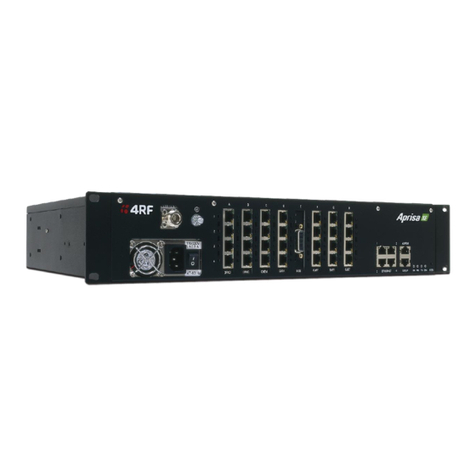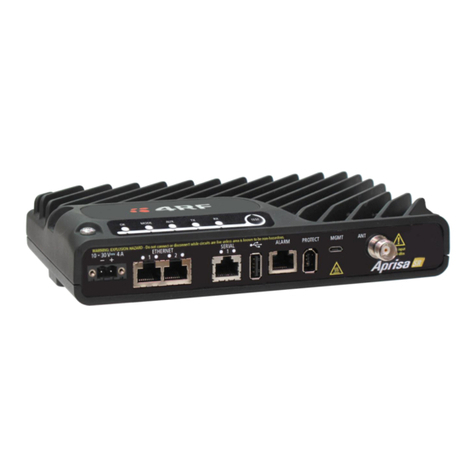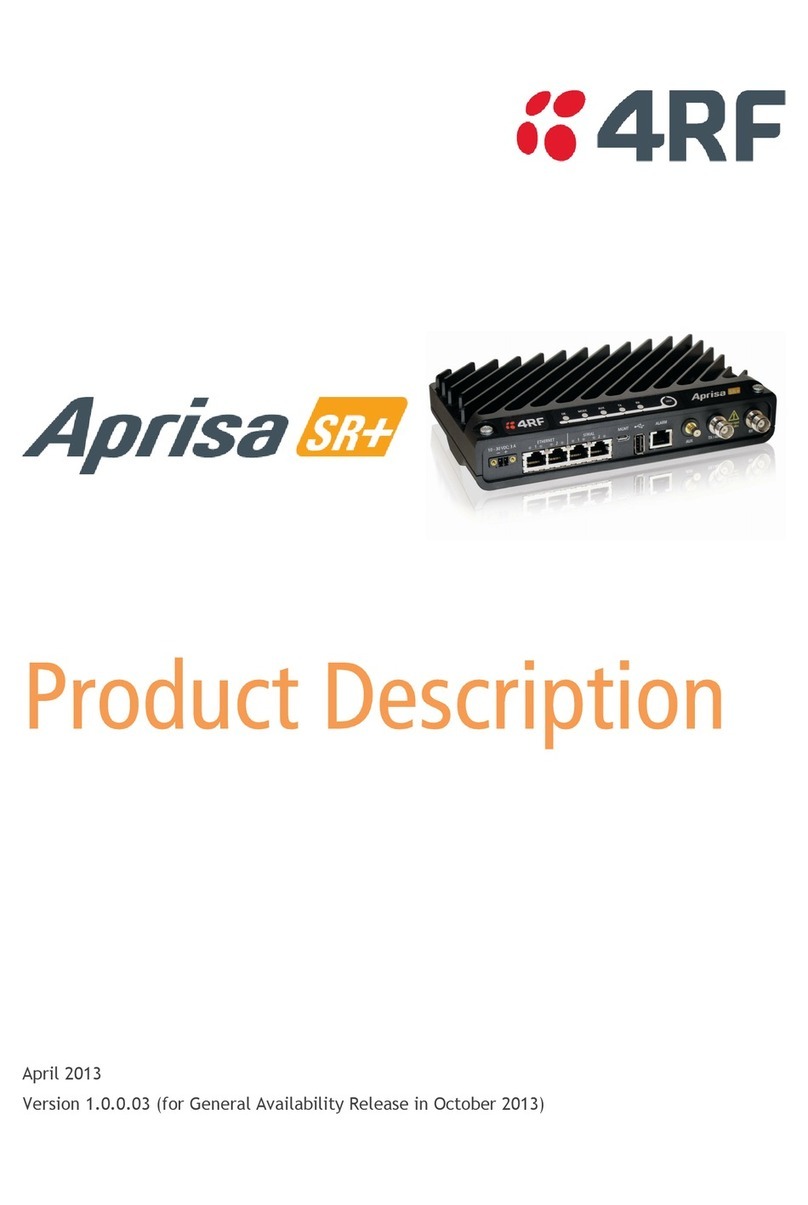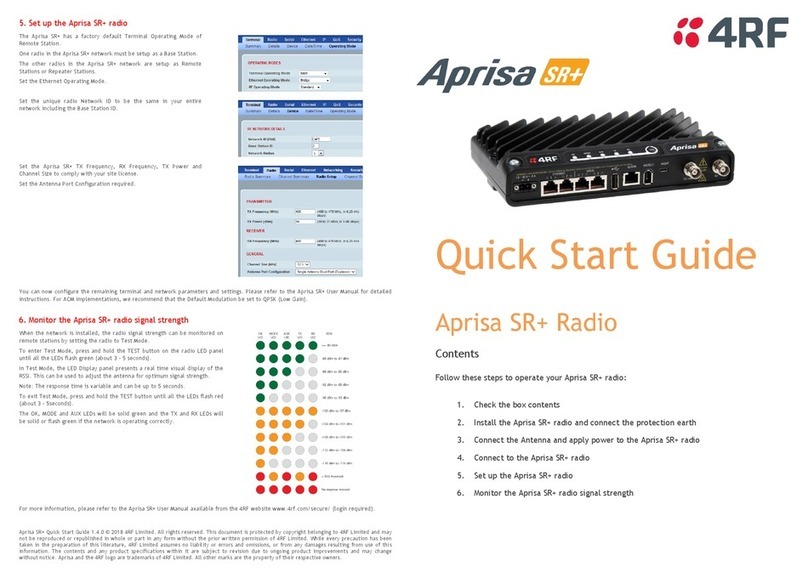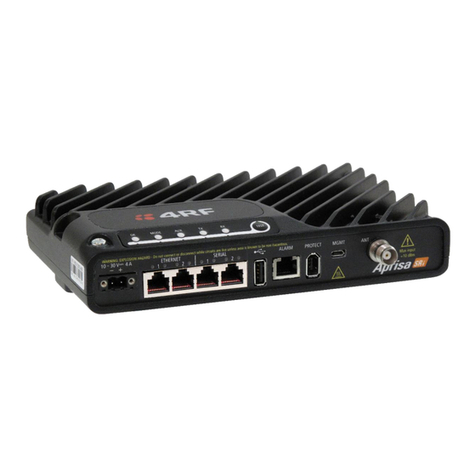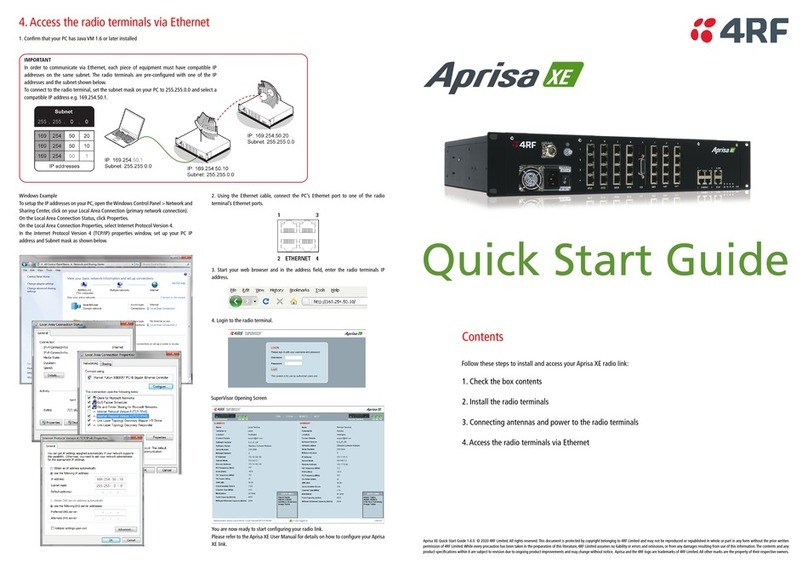
Aprisa XE Clocking Technical Paper 2 | 15 Issued by: 4RF Customer Services 13 February 2009
Table of contents
1. Radio Clocking.....................................................................................................................................................3
1.1. Introduction....................................................................................................................................................3
2. Clocking Setup.....................................................................................................................................................4
2.1. Internal...........................................................................................................................................................4
2.2. Link................................................................................................................................................................5
2.3. Network .........................................................................................................................................................6
2.3.1. QJET clocking setup...............................................................................................................................8
2.3.2. HSS clocking setup.................................................................................................................................8
3. External Clock Failure .........................................................................................................................................9
4. Network Clocking Examples.............................................................................................................................10
4.1. Single Link...................................................................................................................................................10
4.2. Back to back links –Unframed E1...............................................................................................................10
4.3. Back to back links –Framed E1..................................................................................................................11
4.4. 4 wire drop and insert..................................................................................................................................11
4.5. Branched Network - Mixed ..........................................................................................................................12
4.6. Central Master Clock...................................................................................................................................13
4.7. External E1 master clock.............................................................................................................................14
4.8. External HSS master clock..........................................................................................................................15
